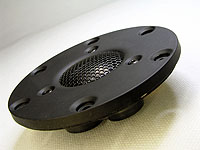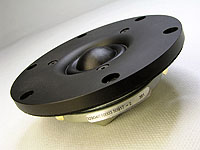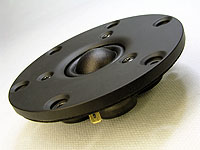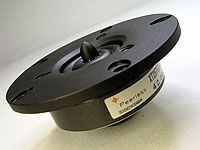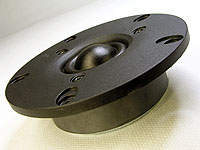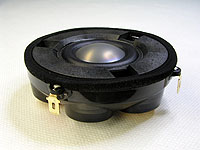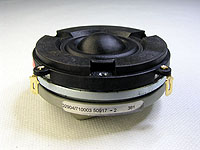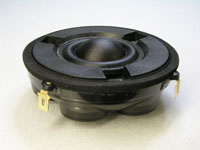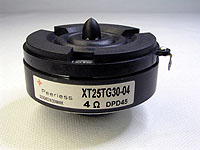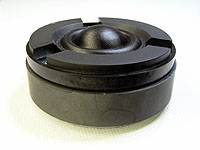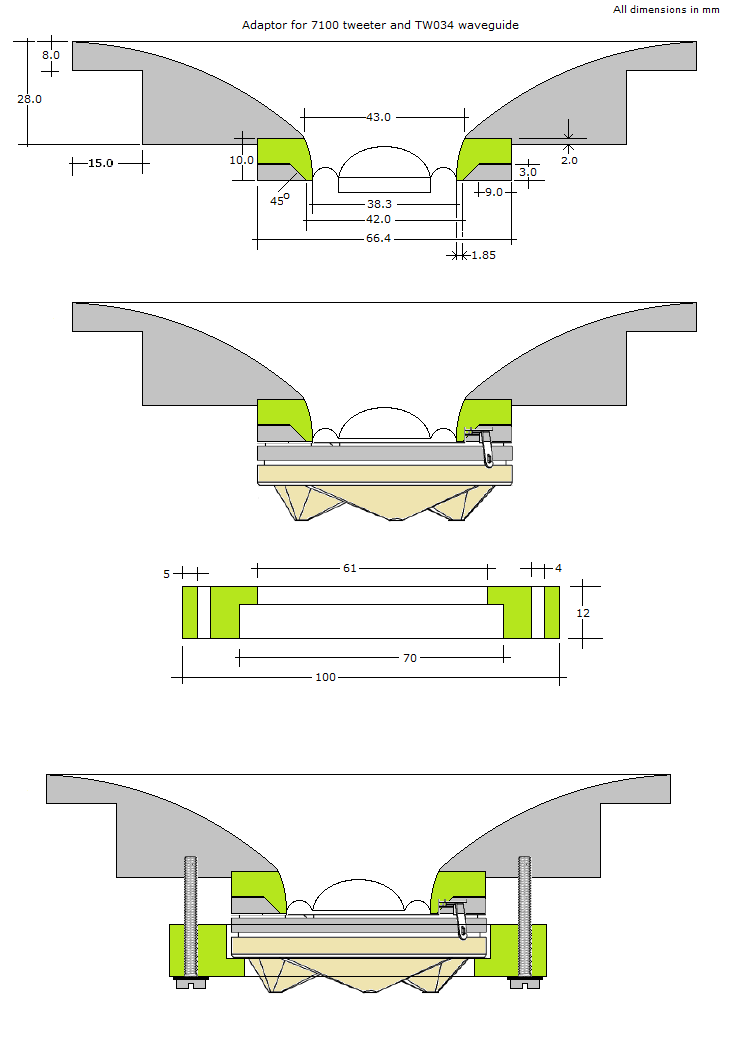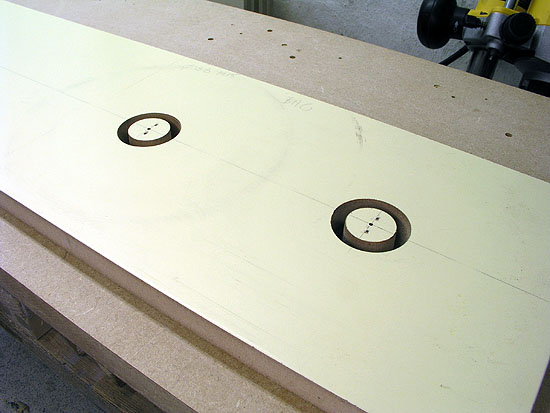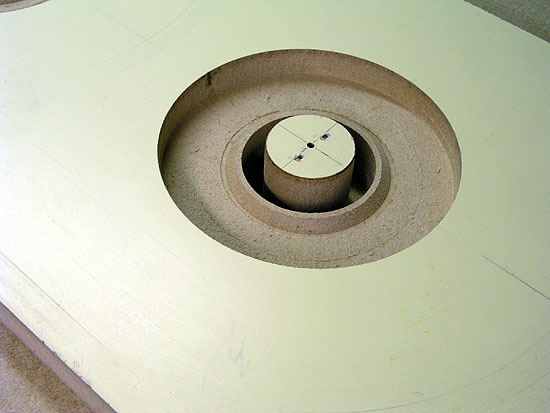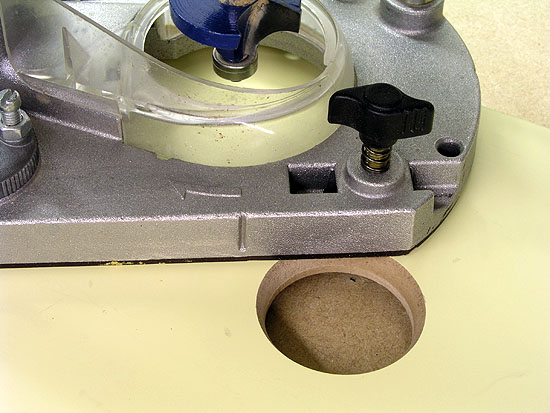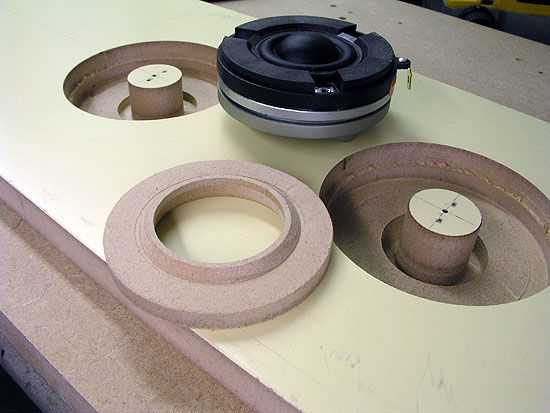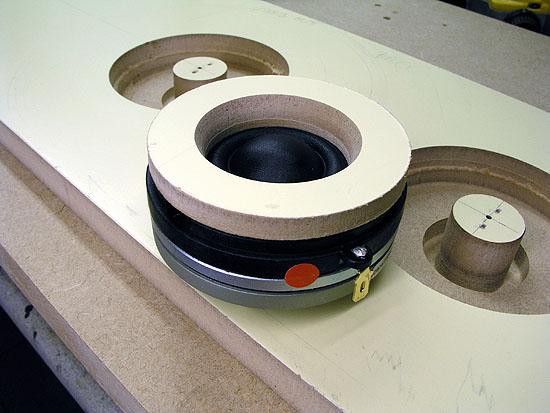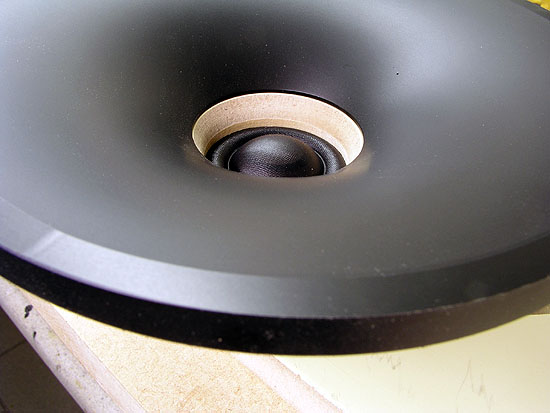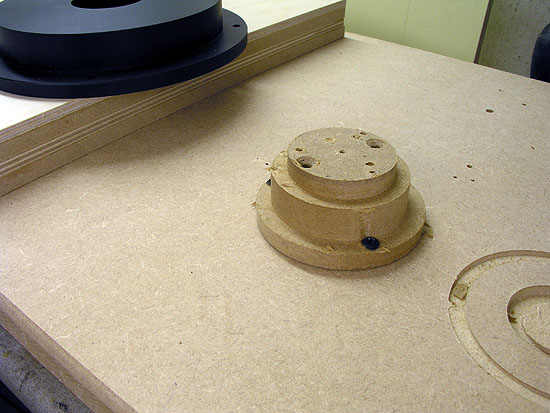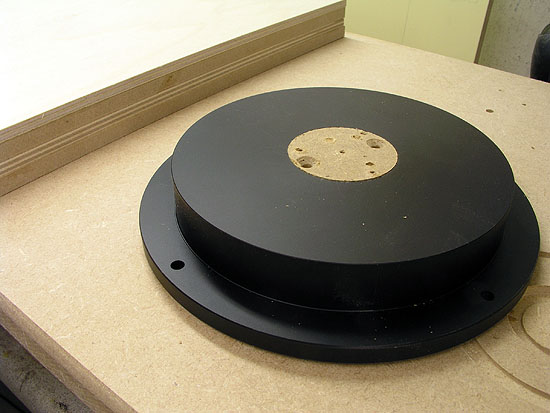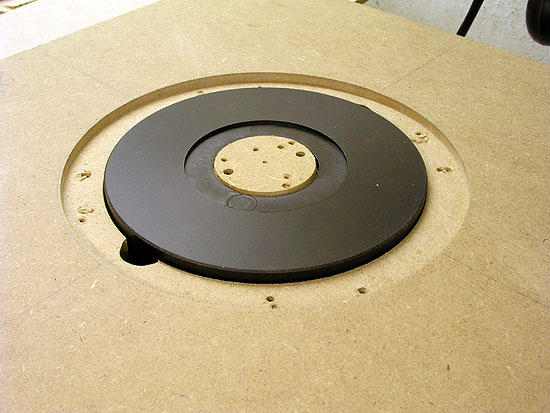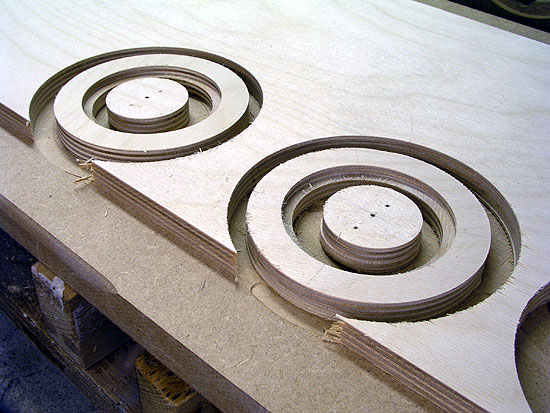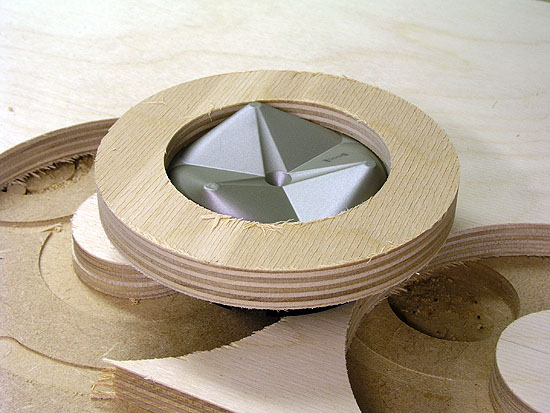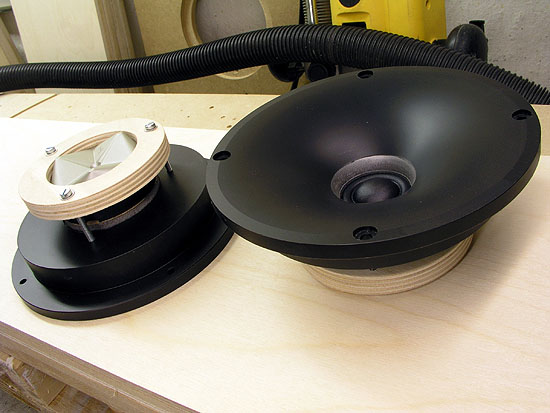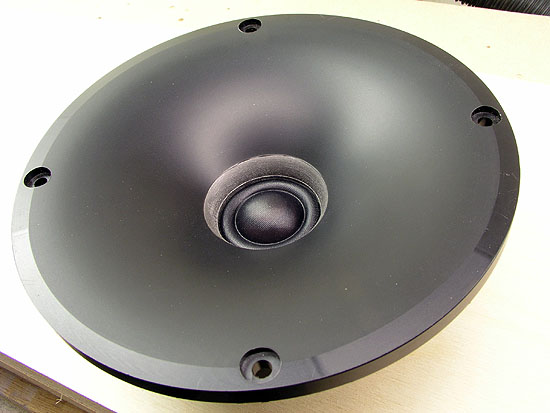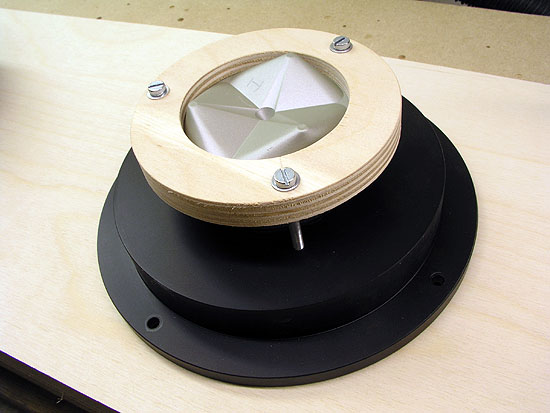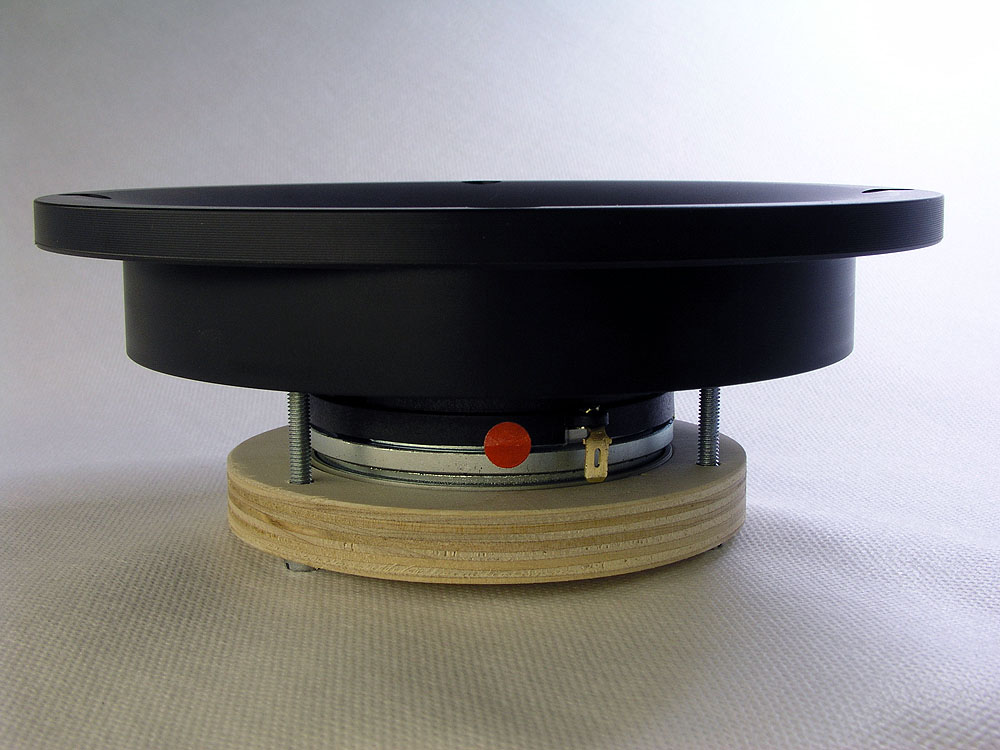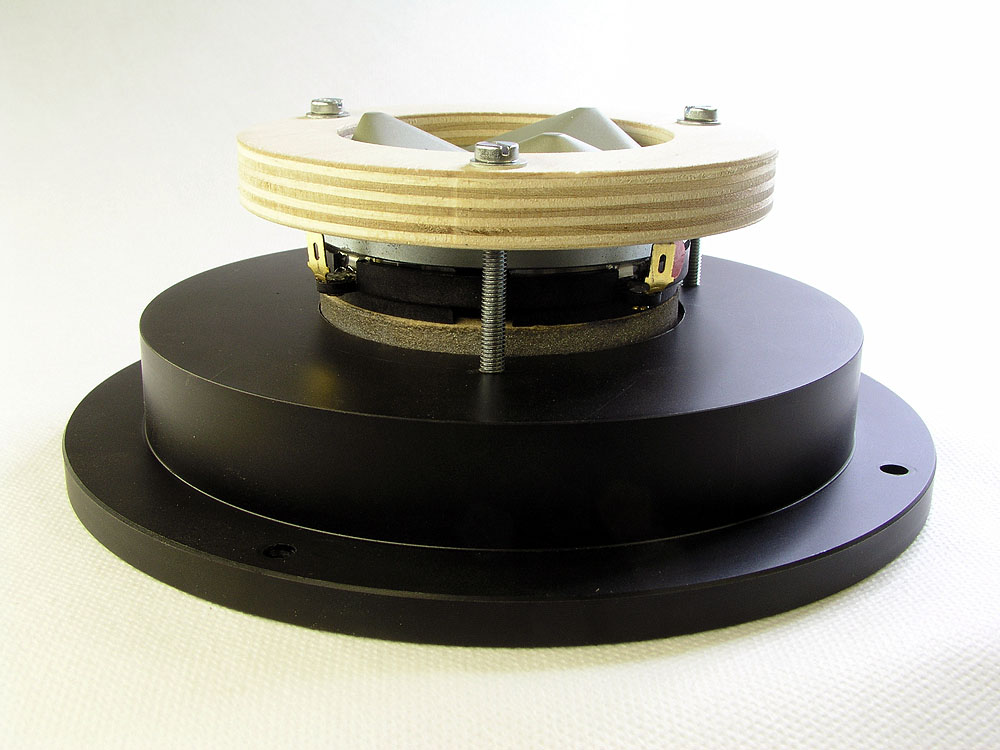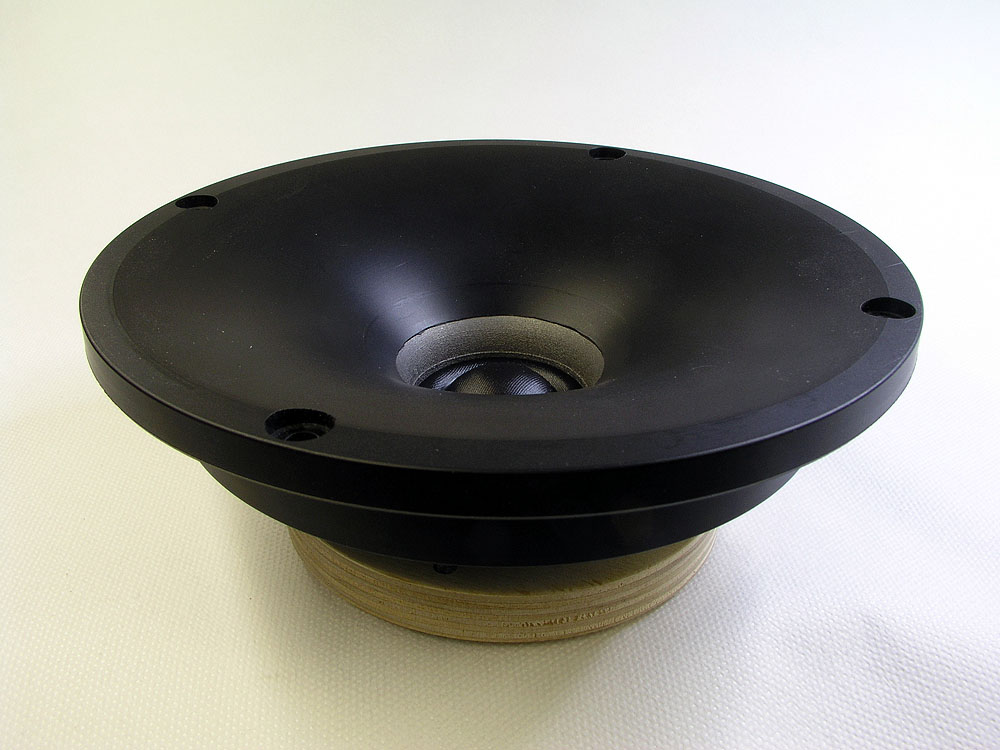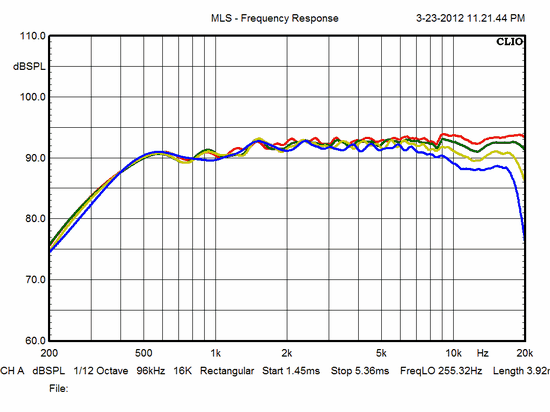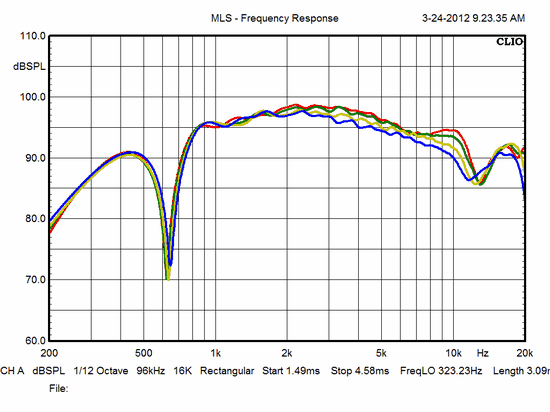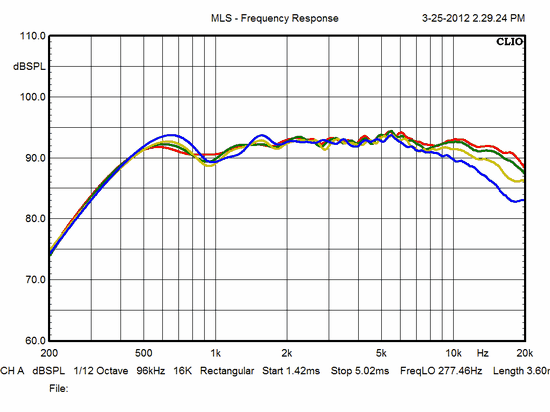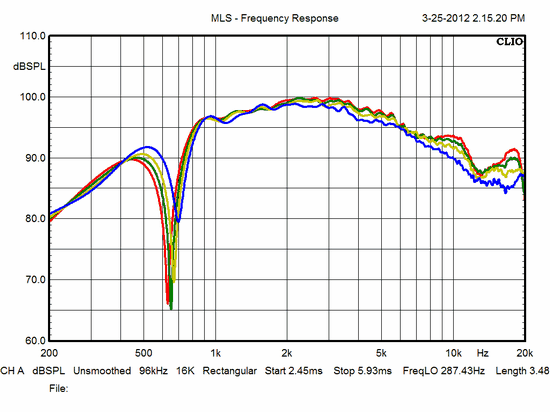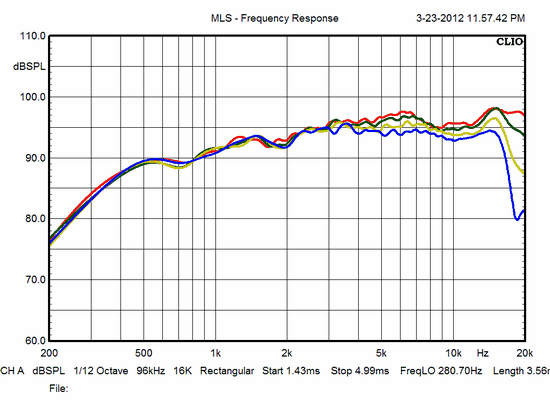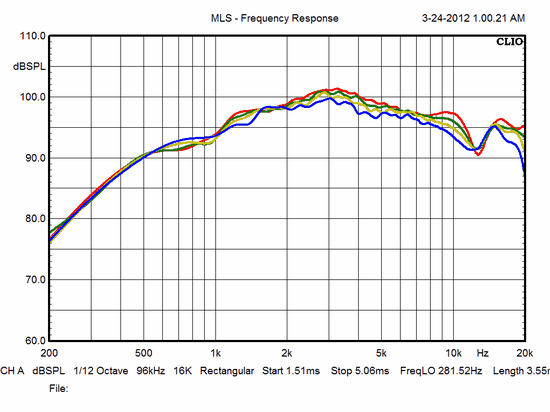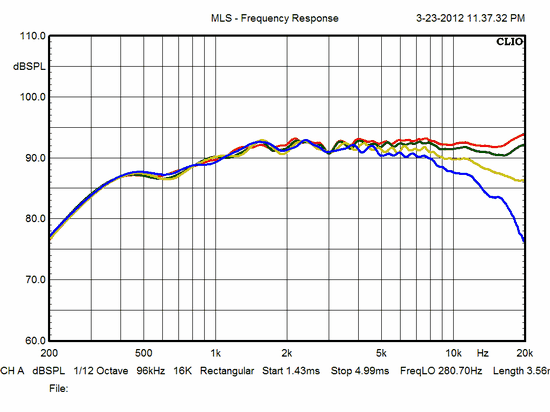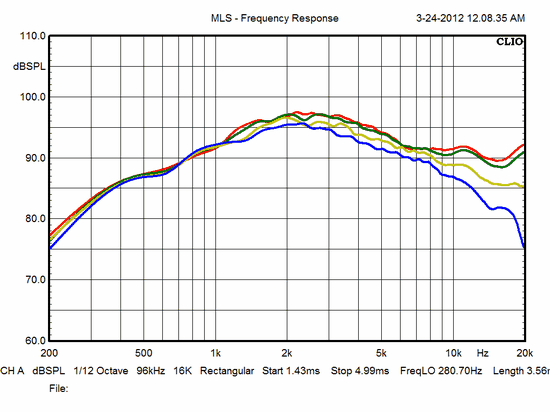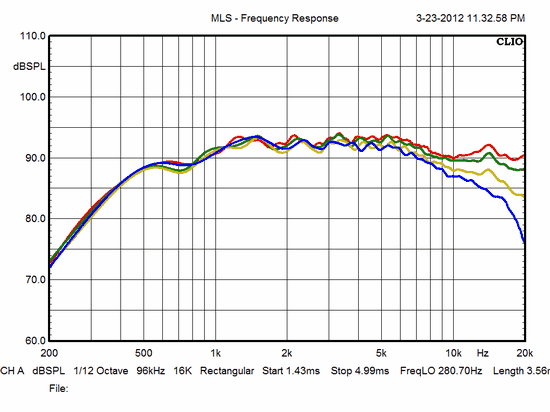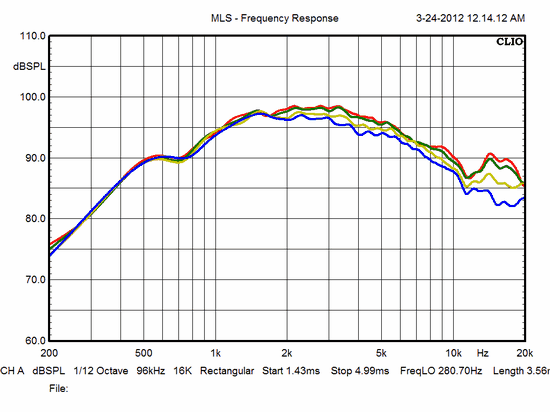|
DIY
Loudspeakers: HOME INDEX UPDATES RESPONSE WHAT'S NEW |
|
The article here is not
meant to be an exhaustive study on waveguides for ScanSpeak tweeters,
rather some practical guidelines for using the waveguide developed for
Audax TW034 as it needs
an adaptor and modification to fit the ScanSpeak tweeters as can
be seen from drawings and images below. The ScanSpeak drivers seen below features the same plastic mold holding the diaphragm, thus can all be used with same waveguide when removing the faceplate. "Can be used" doesn't imply all tweeters are equally well suited for such arrangement. The trouble zone is the 10-20 kHz range, where we may experience a rather ragged response from some of the tweeters. Generally high-frequency is trouble! Wavelengths are short and all sorts of things can happen to the frequency response profiles when adding different faceplates or waveguides. Based on measurements the ring-radiator looks well suited for this application, but despite a somewhat uneven response from the other tweeters, I wouldn't exclude any for waveguide application. I would have liked to include the R2904/700000 tweeter also, but I don't have a pair for the time being. Producing domes having a consistent response in the upper octave is not easy. Coating is critical and I have experienced domes having different dispersion characteristics due to coatings or damping rings being unevenly applied to the thin fabric dome. Soft domes do not operate pistonically, thus various parts of the dome will load the waveguide differently and not even the beryllium dome can be considered operating pistonically as it features a wide suspension made from fabric and I'm sure part of the fabric surround is adding to the radiating area as well as the dome itself. I haven't yet tried inverted domes (Accuton) with waveguides but will in the future - if I can remove the grille without damaging the tweeter. I've now used the 7100 + waveguide extensively in the DTQWT
construction and it's going to stay, offering enhanced resolution to
the upper mid and treble range. More details and better transparency -
and it can be used without changes to the crossover, which is quite a
coincidence.
ScanSpeak tweeters, click to download data file: D3004/664000, D2904/710003, D3004/660000, R2604/832000, D2604/830000
Waveguide adaptor dimensions
Making the waveguide adaptor the the TW034 waveguide. This adaptor could
ideally be made on a lathe and from plastic or aluminum, but it can
also be made from a piece of HDF. Yes, high-density fiberboard. MDF is
too soft and doesn't work. Thanks to Jesper who offered me a slant of
HDF from some kitchen interior, hence the yellow colour. This piece of
HDF is 15 mm thick and we really only need 10 mm but I didn't want to
buy a whole board for two small ring adaptors.
Left: Start by routing two holes of 38.3 mm (+/- 0.1 mm) diameter. Use an 8 mm router bit. Right: Due to the 15 mm HDF I started routing to a depth of 5 mm and to a diameter of some 80 mm (a little more than the final diameter of the adaptor). Next I used a V-groove router bit to make the conical shaped ring fitting into the tweeter diaphragm mounting plate. Remove residual material around ring to make a final panel thickness of 7 mm (check drawing above).
Now we need to chamfer the hole from the other side to fit the modified waveguide. Use a rounding over bit (I think the name is) with a radius of 12 mm and lower it slowly to make an outer diameter of 43 mm. This will provide a curvature suitable for the waveguide. Mount the board again upside down and finish the adaptor to a final outer diameter of 66.4 mm (not critical). Sounds easy, doesn't it? Well, may take a few test samples before perfect.
Check out adaptor on tweeter and press firmly against tweeter to compress gasket and see the dome doesn't move. If so, it should be OK. Right image: As can be seen we need to trim the waveguide and remove some 2 mm material from the rear side.
The finished tweeter/waveguide
Measurements Measurements were done on a 55 x 75 cm cm baffle with tweeter placed 30 cm from top. Measuring distance 0.5 meter at 0, 10, 20 and 30 deg. Input normalised for 2.8V/1m. 1/12 octave smoothing applied to all graphs. D3004/660000
D3004/664000 Beryllium
6640 comments:
Absolutely a candidate for waveguide and we can even see an improved
dispersion in the 10-20 kHz range compared to the "naked"
tweeter. D2904/710003
7100 comments: Already in use with the waveguide - and I like what I hear! Note an unusually even power response in upper octave, almost the same SPL over +/- 30 deg. R2604/832000 - XT25TG-30-04
8320 comments: On paper the driver having the best response in upper octave, but dispersion really doesn't differ from the naked tweeter. Suitable for 90-92 dB systems. The double magnet 8330 may be used even higher. It seems ring-radiators are well suited for waveguides, possibly due to an almost flat diaphragm loading the waveguide more evenly. D2604/830000 - DX25TG-05-04
8300 comments: No objection to this tweeter as well. The 8330 (double magnet) may be interesting also and suitable for high-efficiency systems as well.
|
